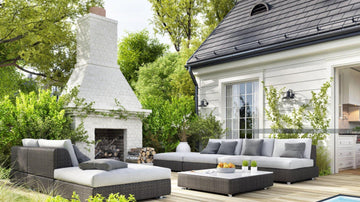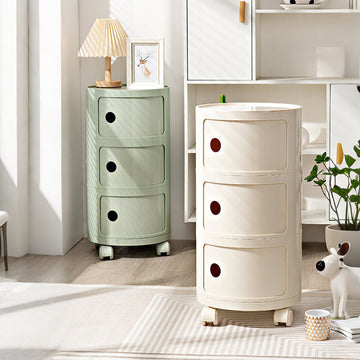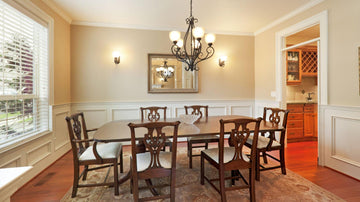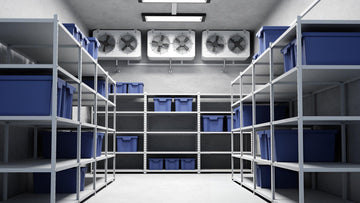Table of Contents
- Introduction
- Why Outdoor Spaces End Up Meaning More Than We Expect
- What Materials Actually Hold Up Outside
- Matching Your Furniture to the Space You Have
- Think Weather First, Always
- Seasonal Shifts, Smarter Furniture
- Cleaning and Caring Without Overthinking It
- What to Do When Things Go Wrong
- Budgeting Without Regret
- Final Thought
To be honest, I never really thought of my balcony as part of my home. It was more like a halfway zone—where the broom lived, where I dumped a folding chair I didn’t love, and where one sad plant clung to life in a cracked pot.
But one spring—after far too many days indoors—I opened the sliding door just to breathe. That day, I sat out there with a mug of tea on a stool that wobbled, and for the first time… it felt like space. Not much. But something.
I didn’t rush out to redecorate. But I did start noticing things differently. The chair was uncomfortable. The table (if you could call it that) wasn’t usable. And I couldn’t help wondering—what would it take to make this little patch of concrete feel like part of my life, not just the edge of it?
So I started slowly. Reading up. Looking at options. Not the stylish stuff from catalogues—but what people actually used. What survived rain. What didn’t bake your skin in July. What you could leave out overnight without stressing.
Turns out, there’s a lot to learn. And if you're staring at your own outdoor space and asking, “Could this be something more?”—well, that’s where I started too.

Why Outdoor Spaces End Up Meaning More Than We Expect
It Wasn’t Just About Going Outside
Back then, outdoor furniture felt like something you bought later—after the good couch, after the dining table. A bonus item.
But lately, I’ve seen people treat their balconies, porches, or rooftops like real rooms. One friend of mine cleared a fire escape, added two folding chairs and a string of lights, and now it’s where she reads every evening. Another turned a narrow patio into a breakfast nook with mismatched chairs and a tiny bistro table.
At my parents’ place, they cleared part of the backyard, built a little fire ring from bricks, and now every Saturday their neighbors show up. No text invites. No set plan. Just chairs, a thermos, and whoever wants to share the evening.
It’s not design. It’s use. And that’s what makes it worth building around.
One Area, A Dozen Purposes
What I didn’t expect was how completely this one small space would shift depending on the hour—or my mood.
In the morning, it’s where I drink coffee and check emails. Later, it’s a laundry zone. Sometimes it’s where I take long calls, just to escape the desk for a bit.
Once, my niece and I sat out there eating fruit straight from the fridge, watching clouds drift over power lines like it was the most magical view in the world.
It’s not a lot of square footage. But it’s the place that reminds me I’m not just inside all the time.

What Materials Actually Hold Up Outside
Metal: Great, But Not All the Same
Aluminum is light and handles rain well. I’ve had a side table made of it for two years now, and it still looks almost new. It’s easy to move, which matters more than I expected when you’re chasing shade.
Steel is stronger, heavier, and way better if you’re near the sea. I once lived four blocks from the coast, and let’s just say rust doesn’t waste time.
Wrought iron looks beautiful—kind of romantic, even—but it does need regular upkeep. Not a good match if you’re low-maintenance like me.
Wood: Warm, Natural, and... Needy
Teak is the gold standard. It’s naturally weather-resistant, and it ages into a soft grey that some people love. I like it too, but it comes with a price tag. And it needs oiling unless you’re okay with the weathered look.
Softer woods like pine are cheaper but demand more attention. I’ve seen them warp or crack if you forget them in a storm. Composite or engineered wood is a decent middle ground—it looks like timber but behaves more like plastic.
Synthetic Stuff: Surprisingly Reliable
I used to think “plastic” meant cheap. But things like PE rattan and resin have really improved. They’re durable, easy to clean, and honestly, they’ve got that carefree vibe that’s perfect for outdoor use.
For cushions and covers, look for anything labeled “UV-resistant” or “outdoor-safe.” I didn’t the first time. Let’s just say my once-red pillow faded into a strange orange within weeks.

Matching Your Furniture to the Space You Have
Big Yards: Think in Zones
If you’ve got a large outdoor area, don’t try to fill it all at once. Instead, break it up. One corner for lounging, another for meals, maybe a fire pit near the edge.
Group furniture by function. A dining table with firm chairs in one area, cushioned lounges in another. It helps you move between “modes” without having to rearrange everything.
Mid-Sized Balconies: Fold, Stack, and Simplify
My current balcony isn’t huge, so I went minimal: a foldable café set and a bench that doubles as storage. When friends come over, I bring out stackable stools I keep inside.
Also, vertical space helps. Wall hooks, narrow shelves, even a hanging planter—those little additions make it feel more lived-in without crowding the floor.
Tiny Terraces: Go Tall, Not Wide
In small spaces, bar-height tables and stools work wonders. They take up less room and feel more open than traditional setups. Light-colored furniture helps too—it reflects light and makes everything feel a bit airier.
And mirrors? Yes, even outside. I hung a small one on a brick wall, and it instantly made the space feel bigger.
Rooftops: Watch the Wind
If you’re on a roof, weight and wind resistance matter more than style. Low-profile pieces are safer, and anything with a wide base is less likely to become airborne.
Look for options with tie-downs or hooks. Even outdoor rugs should be secured—trust me, one gust and they’re gone.
Think Weather First, Always
Where You Live Changes Everything
-
In coastal areas, salt eats through metal. Go for aluminum or stainless steel.
-
Hot, dry climates? Avoid dark metal—chairs get hot enough to fry eggs.
-
Rainy zones need fast-drying cushions and slatted designs that don’t trap water.
-
Cold winters? Don’t leave wood exposed unless you’re treating it regularly.
Before you buy anything, take a week to observe your space. Where does the sun hit? Where does water pool? That little bit of homework goes a long way.

Seasonal Shifts, Smarter Furniture
Warm Months = Full Use
In spring and summer, your furniture becomes part of everyday life. Add shade—umbrellas, pergolas, or even a big beach towel clipped between hooks.
I like mixing in soft things: rugs, throw pillows, even string lights. It sounds decorative, but it really changes how often you want to sit out there.
Cold Months = Protect or Pack Away
When fall hits, I start prepping. Cushions get zipped into a storage box. Wooden pieces get a wipe-down and a coat of sealant.
Covers help, but only if they’re breathable. Otherwise, moisture gets trapped, and you end up with mildew.
Foldable = Functional
If you don’t have garage or shed space, folding chairs and collapsible tables are lifesavers. Just make sure the mechanisms aren’t flimsy—I’ve broken more than one in the process of “easy storage.”
Cleaning and Caring Without Overthinking It
-
Metal: Wipe down with a damp cloth and mild soap. Skip abrasive cleaners.
-
Wood: Use a soft brush. Re-oil once or twice a year if needed.
-
Fabric: Spot-clean spills immediately. Covers that unzip = peace of mind.
-
Synthetic Rattan: Hose it down. That’s it. Seriously.
Every few weeks, I check for loose screws or wobbly legs. It takes five minutes and has saved me from more than one collapsing moment.
What to Do When Things Go Wrong
Faded Colors?
Rotate often. Or just embrace the fade. If that’s not your thing, outdoor fabric spray paint exists—and works surprisingly well.
Rust Spots?
Light sanding and a rust-protective primer can buy you time. Long-term? Switch to rust-proof materials next time.
Loose Bolts or Warped Legs?
Tighten, shim, or swap parts if you can. If not, sometimes it’s okay to let go. A chair past its prime is a good excuse to try something new.
Budgeting Without Regret
Start with what you’ll use most. For me, that was a decent chair and a stable table. I added the rest slowly—one summer, one sale at a time.
Don’t feel pressured to buy a full set. Sometimes mixing pieces gives the space more character—and spreads out the cost.
If you’re choosing where to splurge, invest in what touches your body: cushions, lounge chairs, anything with back support. You’ll feel the difference every time you sit down.
And don’t ignore secondhand options. I found my favorite outdoor bench on a local resale site for a quarter of its original price. Still going strong.
Final Thought
Your outdoor space doesn’t have to be big. It doesn’t need a theme. It just needs to work for how you live—and invite you to step outside a little more often.








